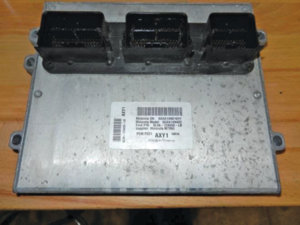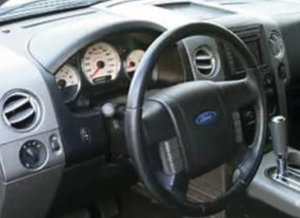By John Forro | Contributing writer
I usually like to see a problem first hand a half dozen times before I feel comfortable calling it a silver bullet. However, I have seen this same problem occur three times now this winter season, and I think I have found the issue.
Silver bullets can be a real time saver. Often I am asked when a new
Silver Bullet Book will be made available. I have found over the last several years that vehicles are simply made better and are not having as many pattern failures as they once did. Sure, there are still some, like various vacuum leaks, but nowhere near as many as we once had.

No Crank, No Start
The subject vehicles were 2002-2006 Ford trucks — the first was a 2002 Ford F-150 with a 5.4 liter, second was a 2006 Lincoln Navigator with a 4.6 liter and finally a 2004 Ford F-250 with a 5.4 liter engine. All of the customer complaints with these vehicles were the same: “The vehicle will not crank/start when cold.” One customer added that it would be fine if it was kept in the garage overnight, and one handy guy said if he jumped the starter it would be fine. These three vehicles were not at my shop all at once, but over a period of approximately 6-7 weeks.
For this article I will discuss the first vehicle, the 2002 Ford F-150, in detail. The other vehicles had similar diagnostic processes. The customer wanted to have the vehicle towed in to my shop because it was having trouble starting. Some mornings it would start while others it would not. This person was not a regular customer of mine and was recommended to me by a daughter-in-law. After providing the address to have the vehicle towed in, I tried to rapidly finish up the vehicles I was currently working on to make room in the shop so the tow truck could just drop the vehicle inside upon arrival (big mistake). I normally try to do this when possible because it is difficult for me, as a one-man facility, to get the dead vehicle in by myself.
First Try
The vehicle shows up about an hour later and is dropped off inside the shop as I had planned. The vehicle sat inside my shop at 58 degrees while I proceeded to finish up another vehicle I was working on. After another half hour I turned my attention to the F-150. I wrote up the vehicle, tried cranking with no luck, but I noticed the security light flashing rapidly.
This warranted a scan of the security system as well as all the other modules for codes. No codes from any of the modules were found.
At this point I thought I had a PATS (passive anti-theft system) issue, but I decided to take a visual inspection both under the hood by the ECM and under the dash by the ignition switch areas for any potential obvious wiring conditions. Everything looked up to par in both areas. I even went as far as unplugging the ECM and looked at the terminals both inside the ECM and the harness side of the connectors.
Once I went back inside the vehicle, the problem was gone! The truck cranked and started with no issue several times.

At this point I considered everything I did wrong thus far. I shouldn’t have disturbed anything. I should have looked over a schematic and performed some specific circuit testing at the various ECM and ignition switch circuits. I would now have to wait to see if the problem would come back. Wasted time.
I left the vehicle in the shop overnight, and in the morning it started without any problem. I parked the vehicle outside and throughout the day it started without any issues. I had no choice but to call the customer and give the vehicle back without figuring out the problem or making any money.
Second Try
About a week later the phone rings again and, as we all already know, the vehicle was once again not cranking and was getting towed back in. My mind started racing to formulate an attack plan. What will I test first? What did I do last time to make the problem disappear? Are there any similarities between this day and the last day that it would not start?
The only similarity between both days was that the temperature outside was very cold. Much like the entire country, it has been an unusually cold winter here in Ohio. This time I had the tow truck place the vehicle outside. Once the vehicle arrived I made sure the problem was present — no crank and security light flashing. I scanned for any related trouble codes again, and this time I pulled a code indicating it was unable to communicate with the ECM.

Cold Car, Hot ECM
I quickly printed a schematic to check the ECM’s power and grounds and, upon verifying they were present, I removed the ECM and brought it inside the warm shop. After an hour or so I took the ECM back outside and installed it into the truck and the vehicle started right up.
I was on to something. Could I have a bad circuit board inside the PCM, or is it a mating problem at one of the ECM connectors because I disturbed them both times to get the vehicle started? I let the vehicle sit outside longer to allow the problem to reoccur. This time, I took my heat gun outside and applied heat to the ECM for a couple of minutes.
After a little heat, the vehicle started. This confirmed my suspicion of a bad board inside the ECM. I probably would have been able to figure this out the first time around if I didn’t drop the vehicle inside the shop.
A new PCM, with an installed flash and programming the keys, repaired the vehicle. Both of the other vehicles mentioned earlier were repaired with the same procedures. Looking at the upcoming forecast, we may have more of these vehicles showing up in the near future.













